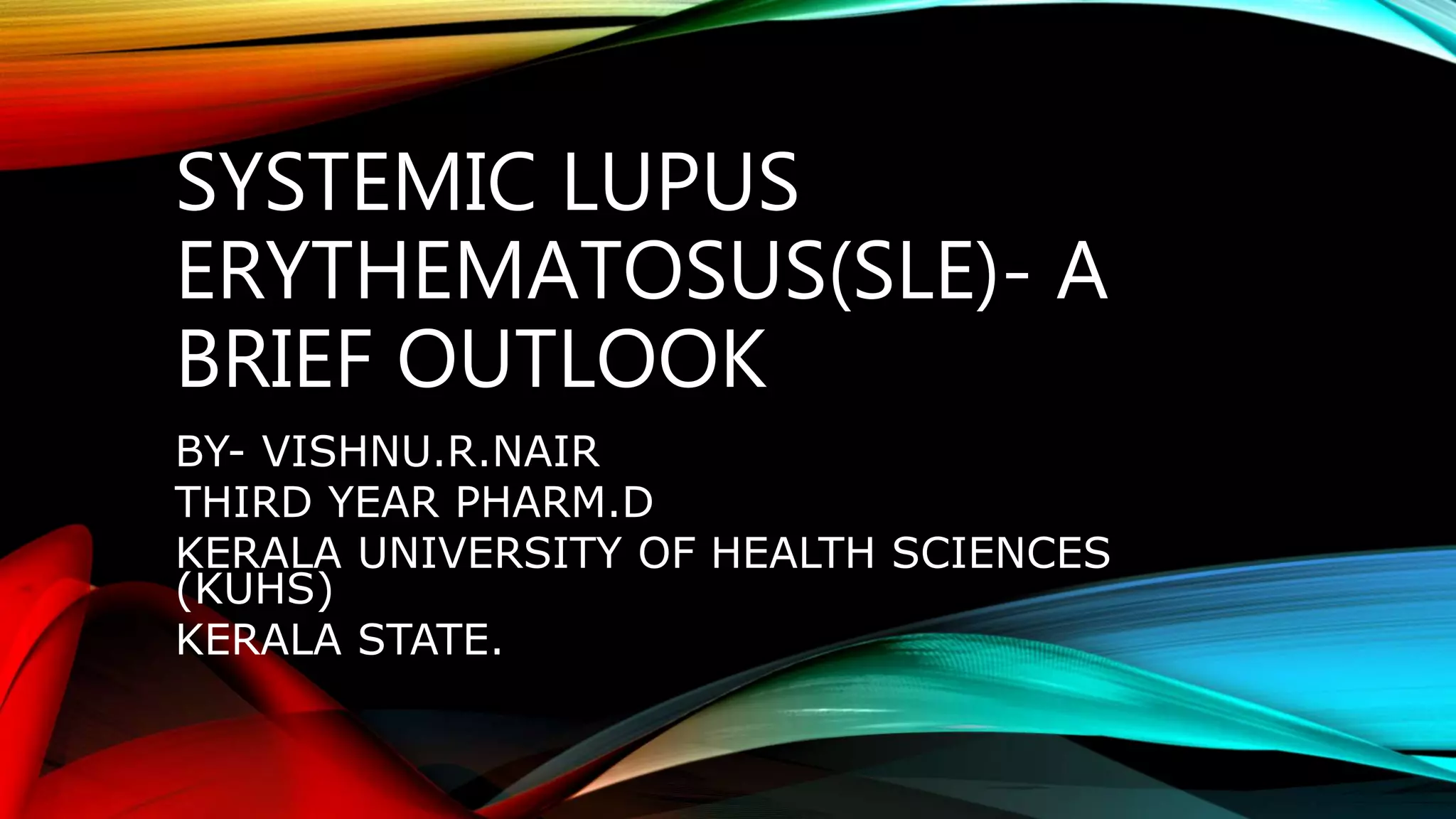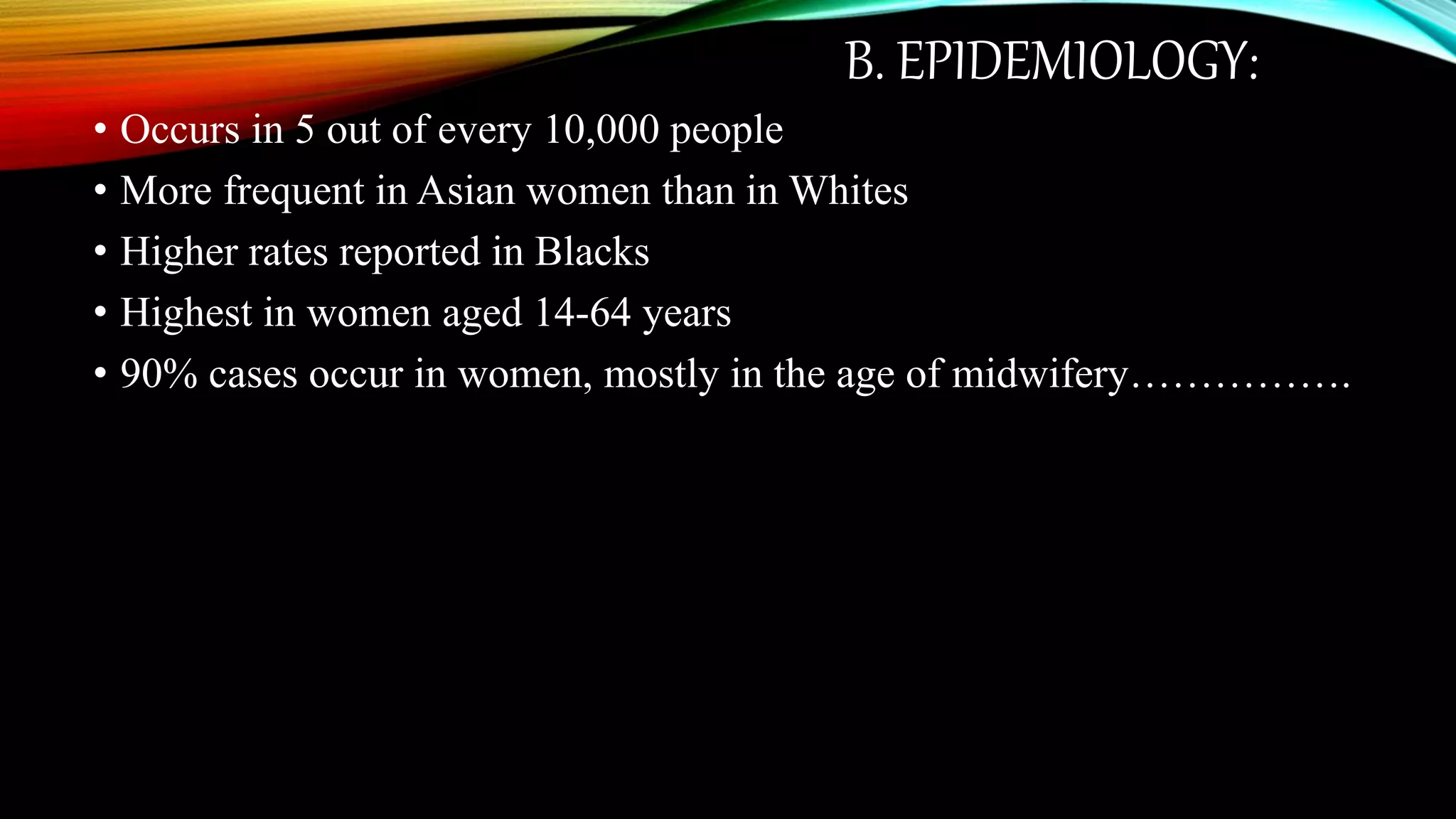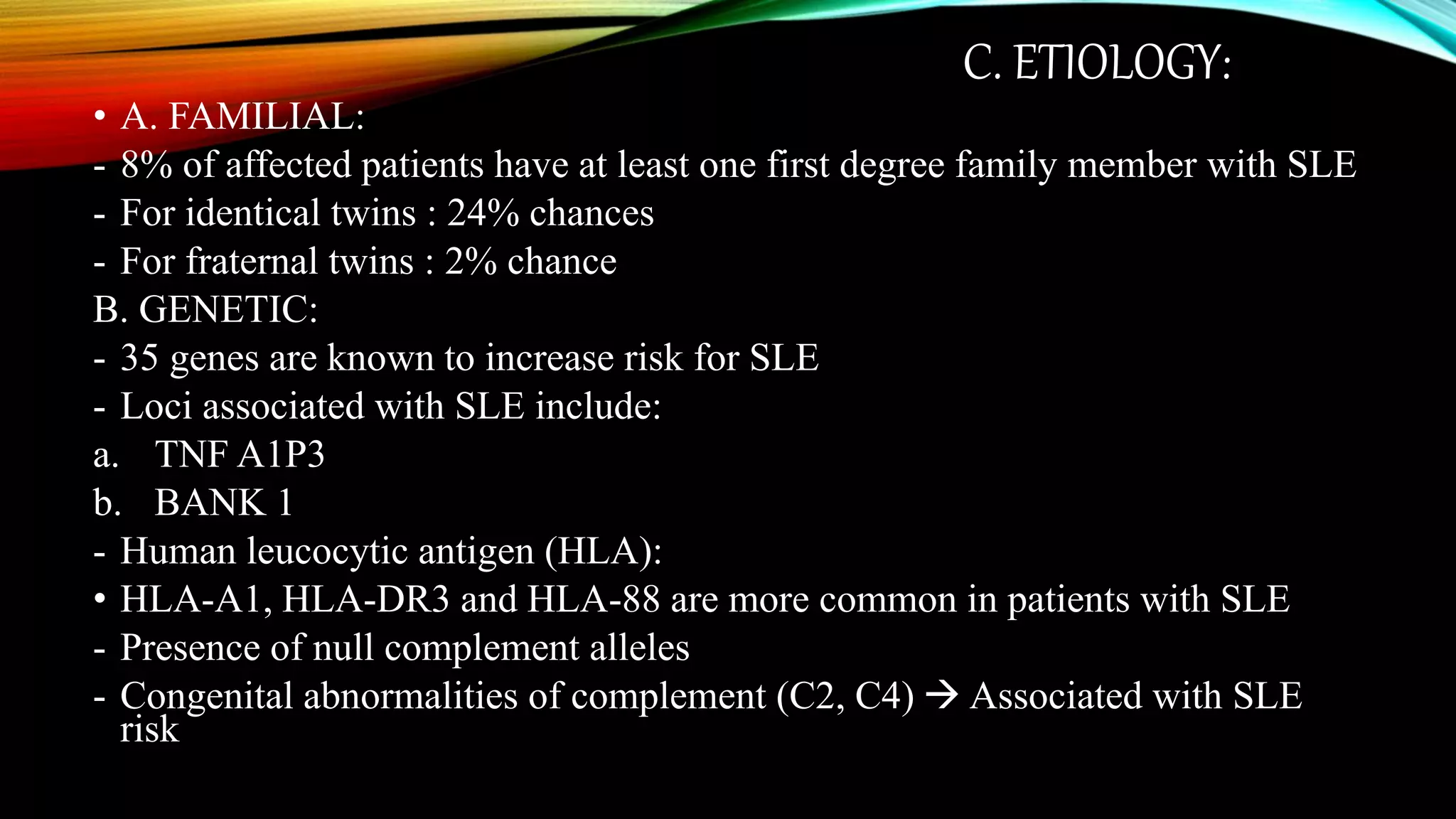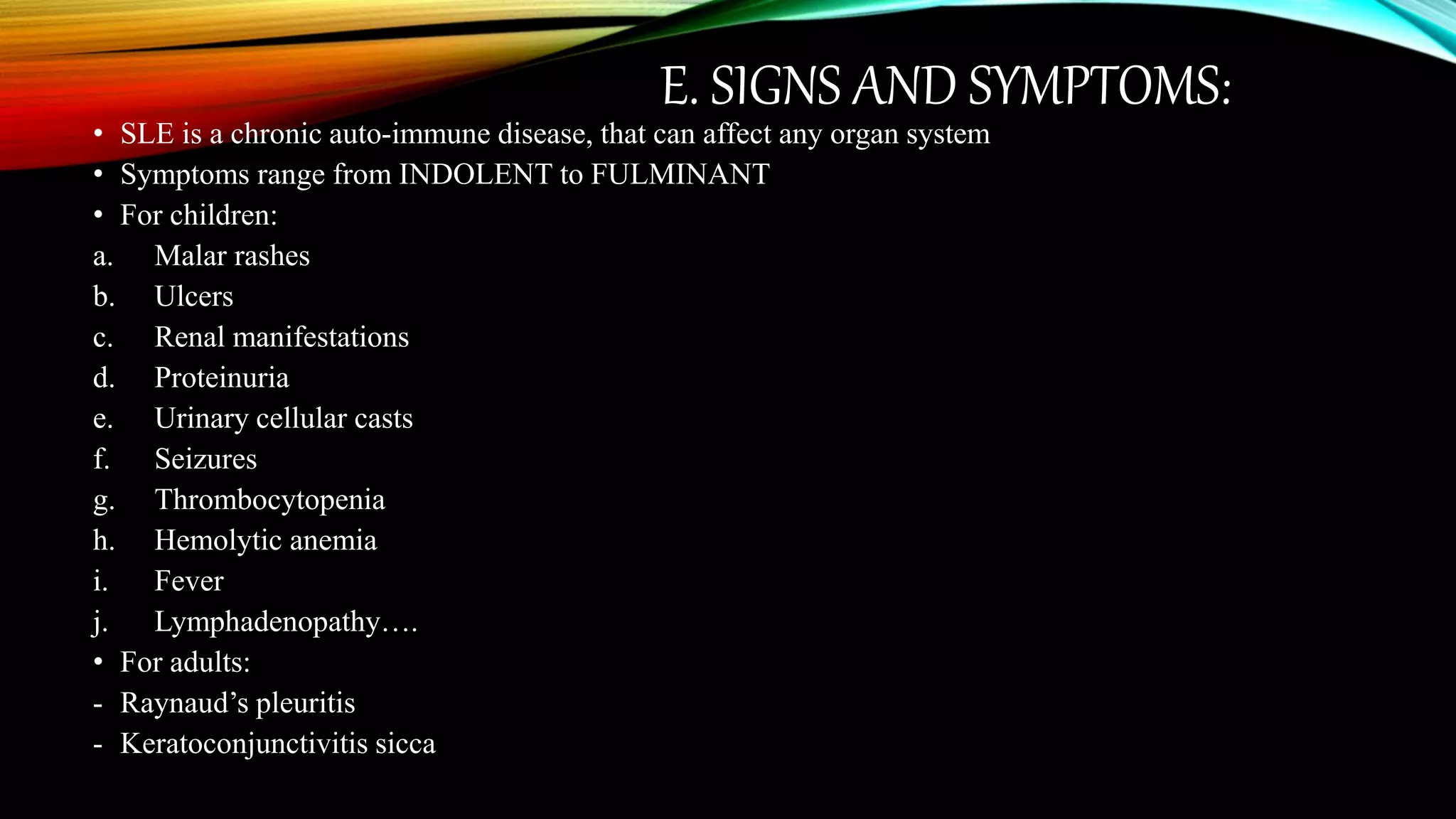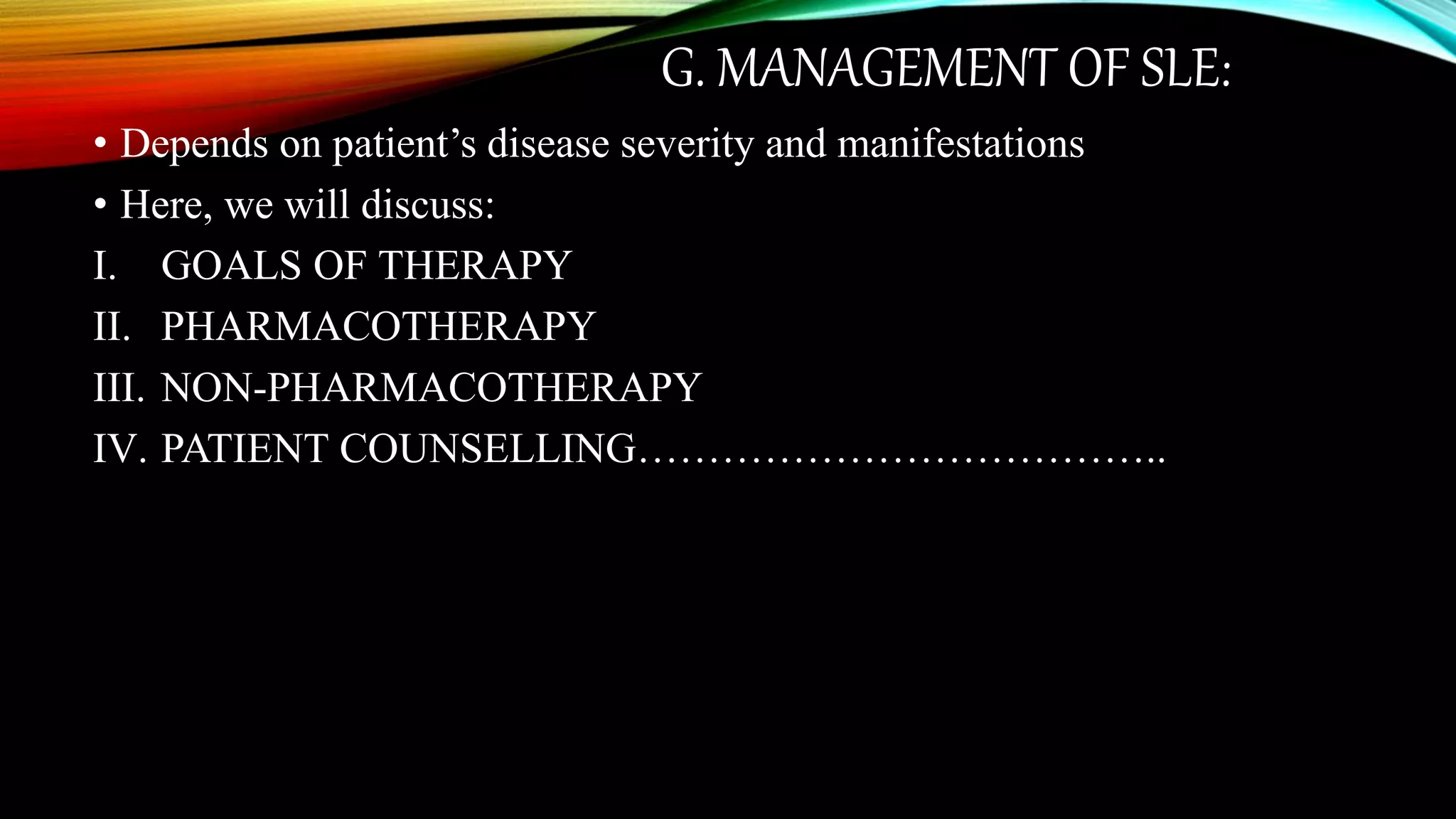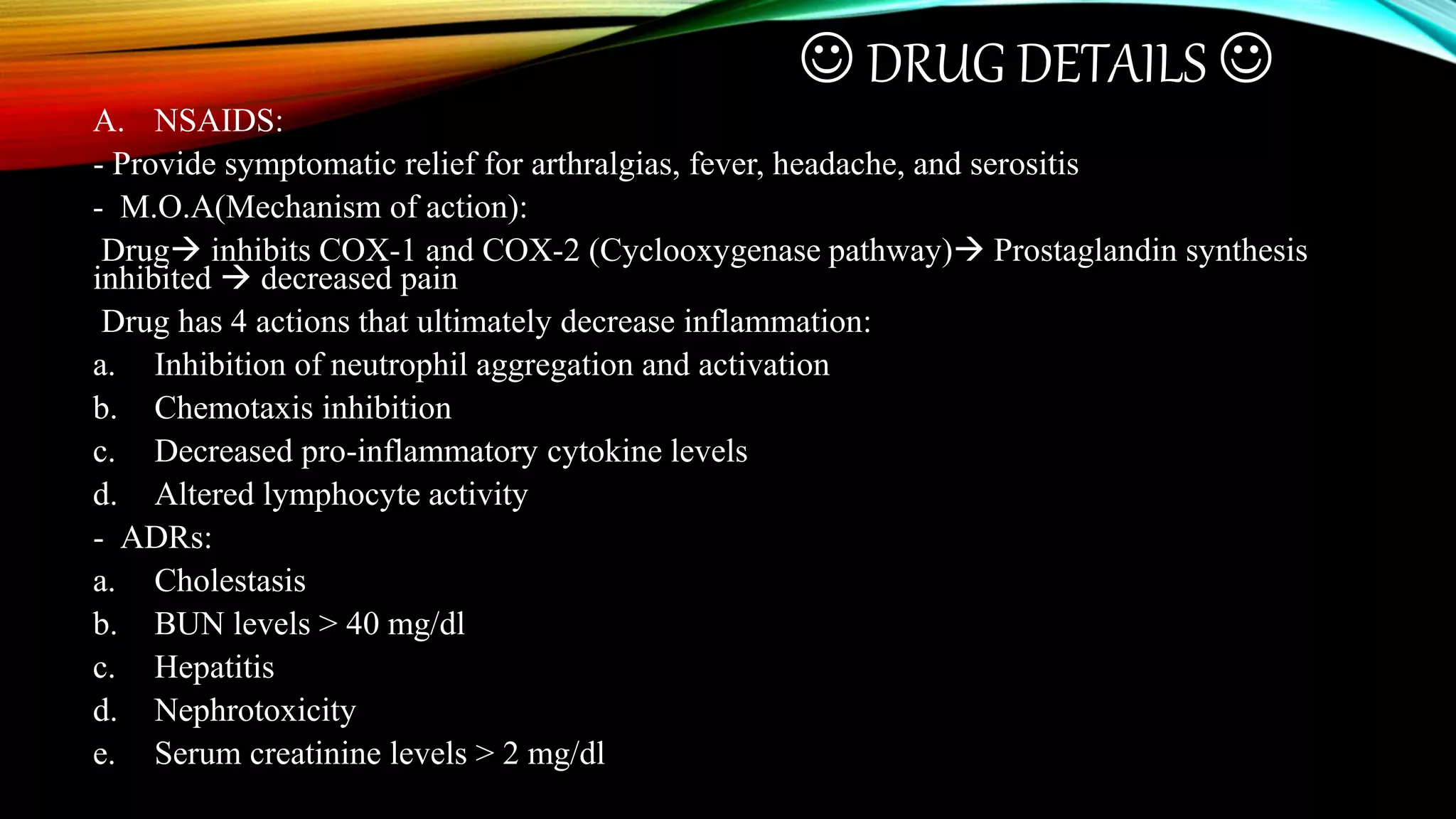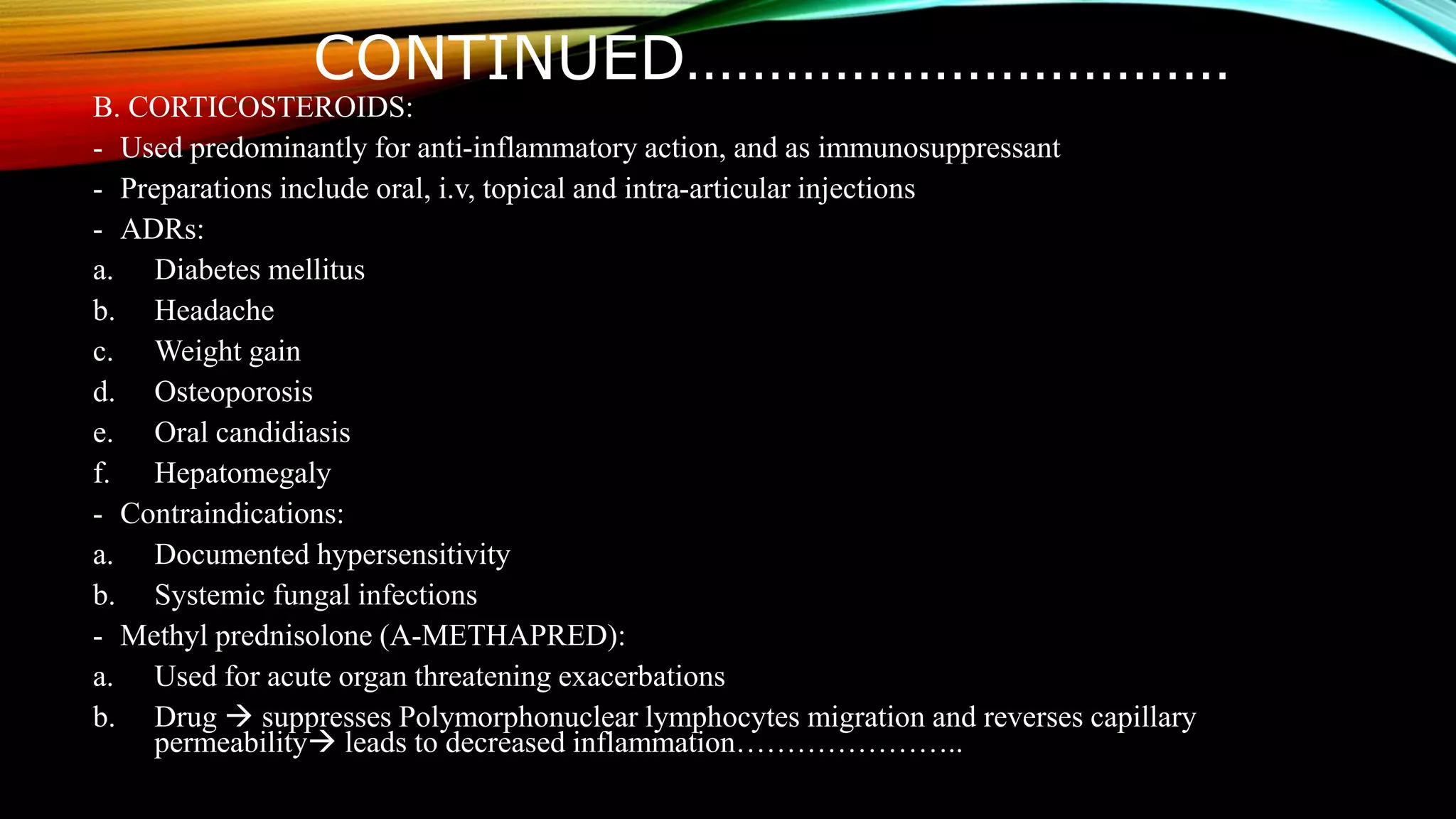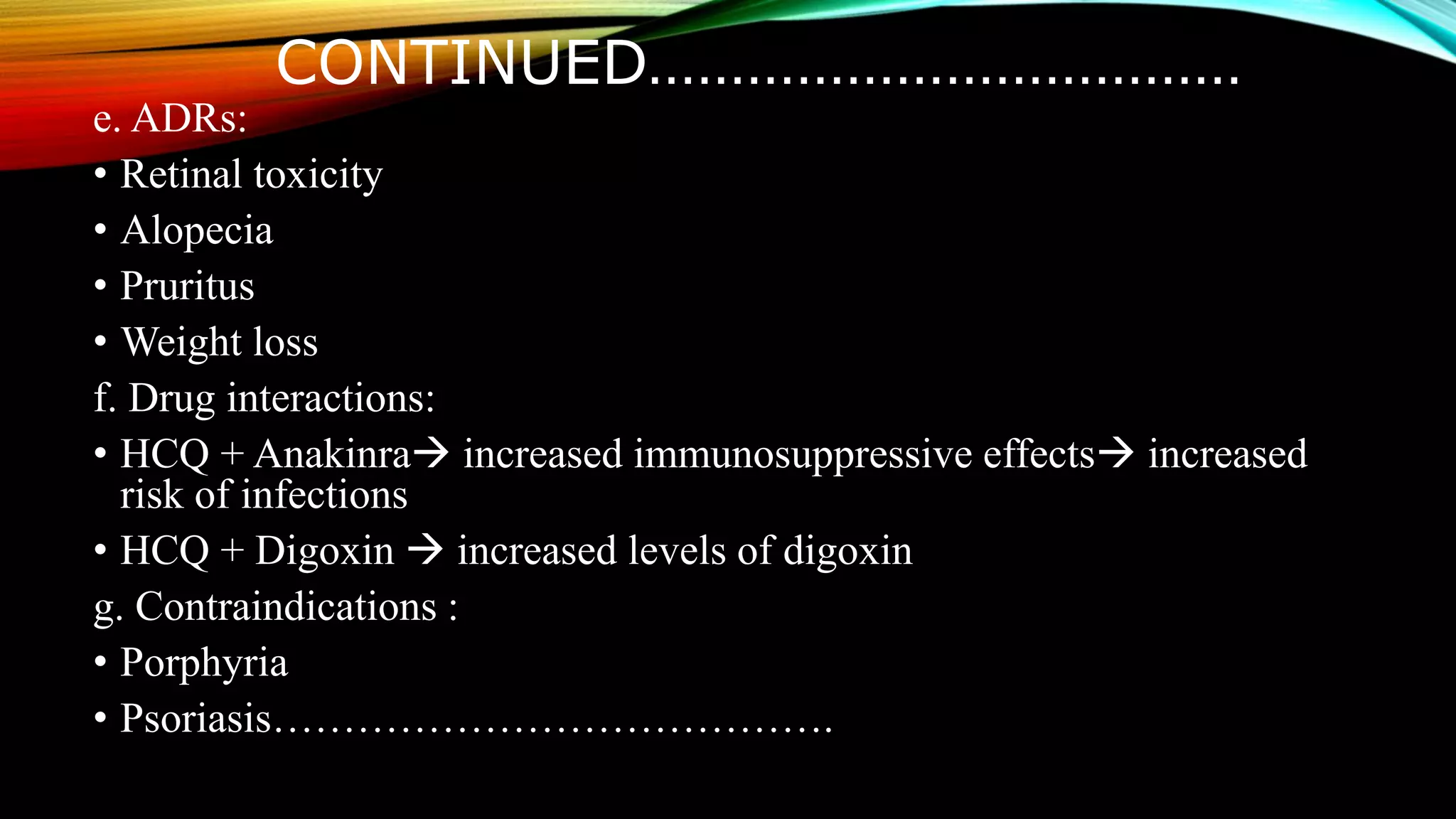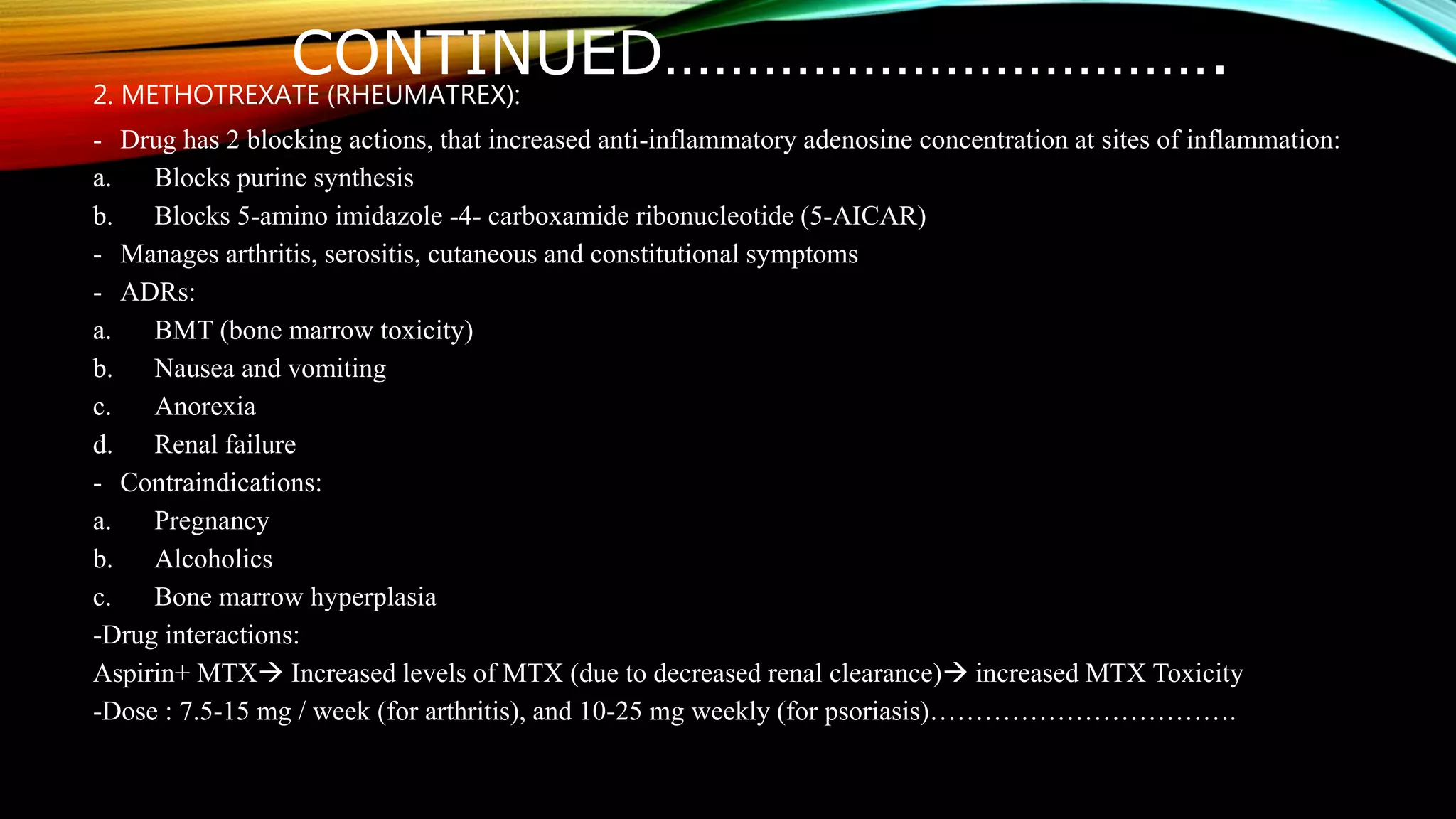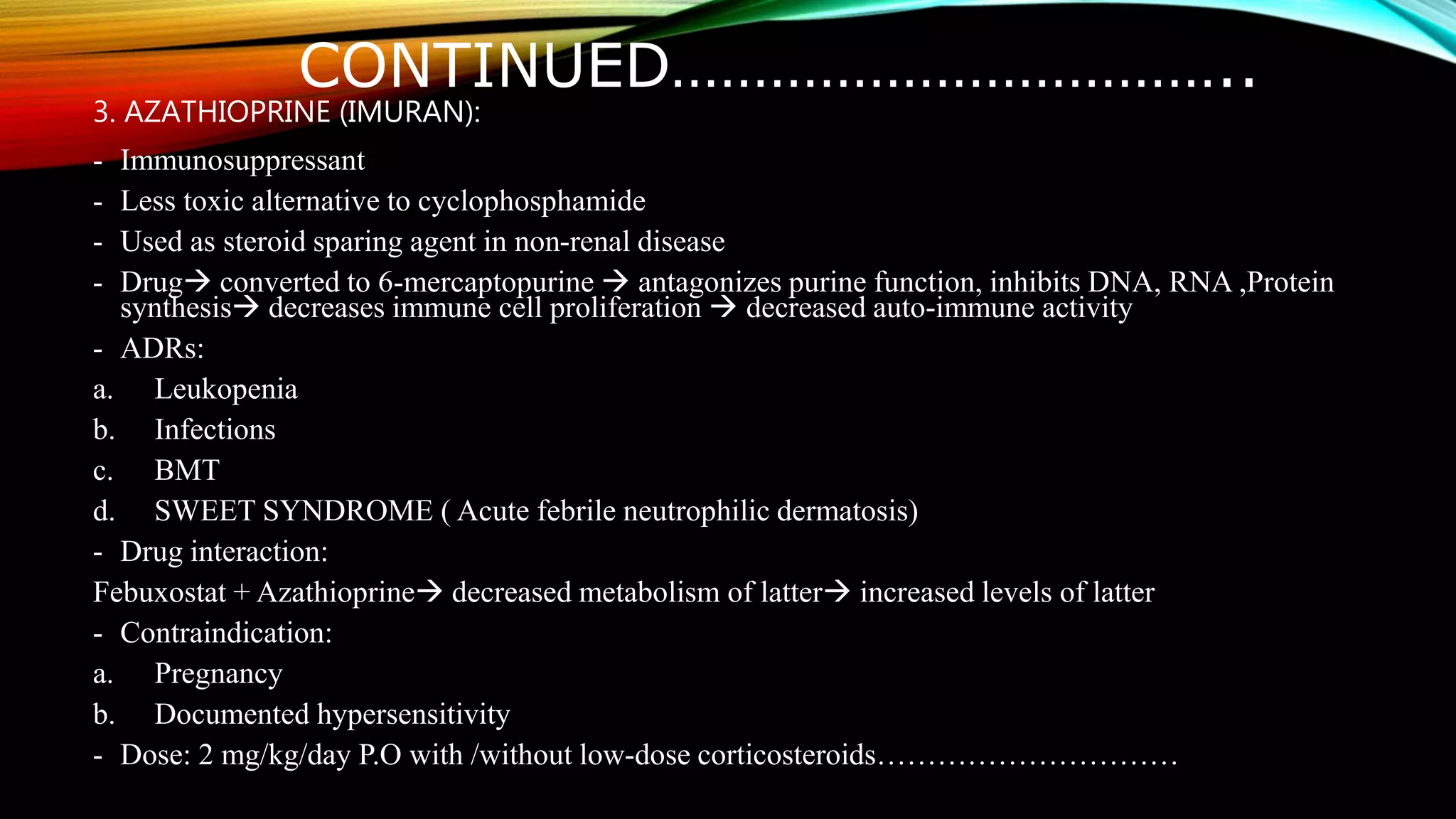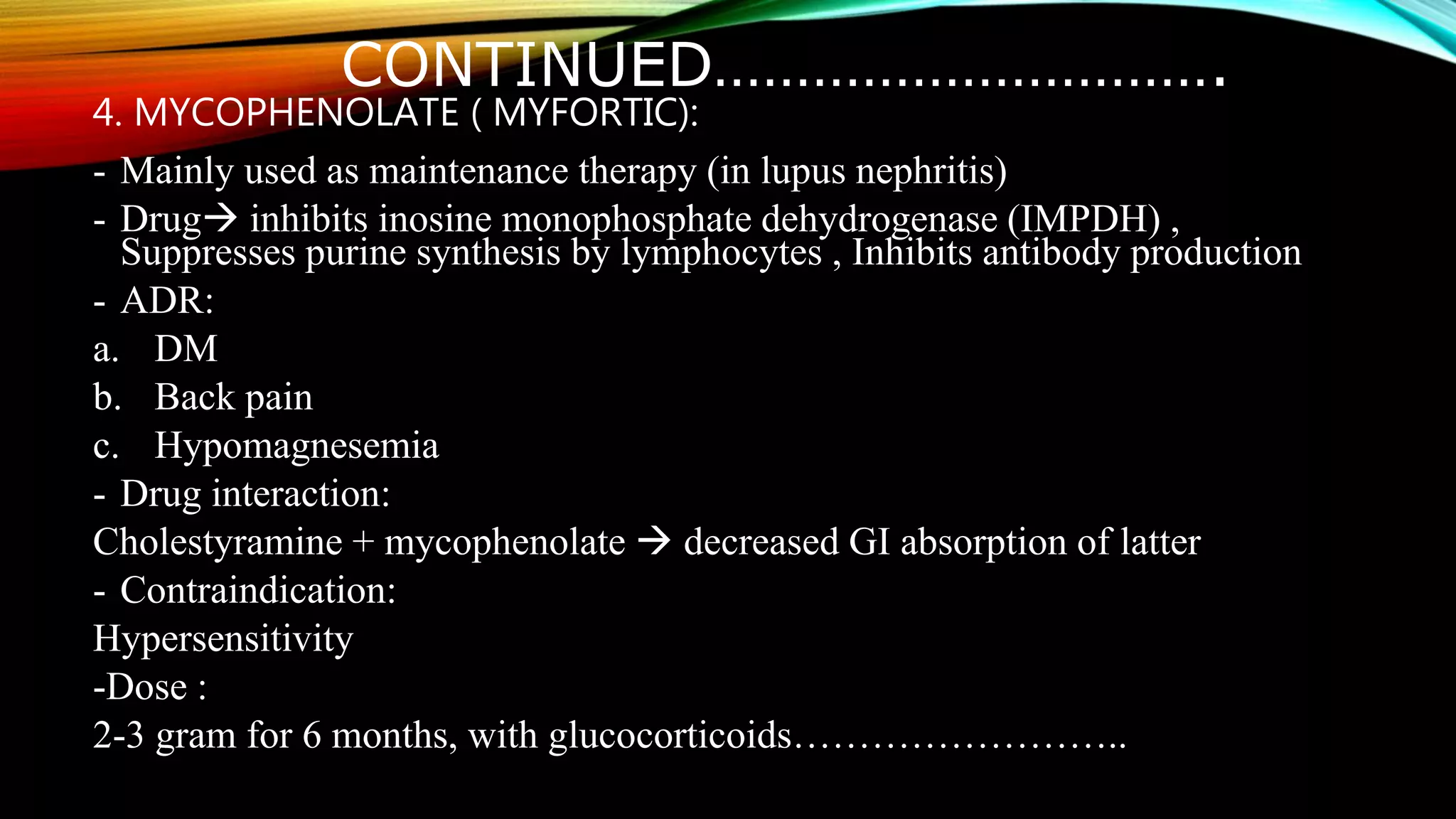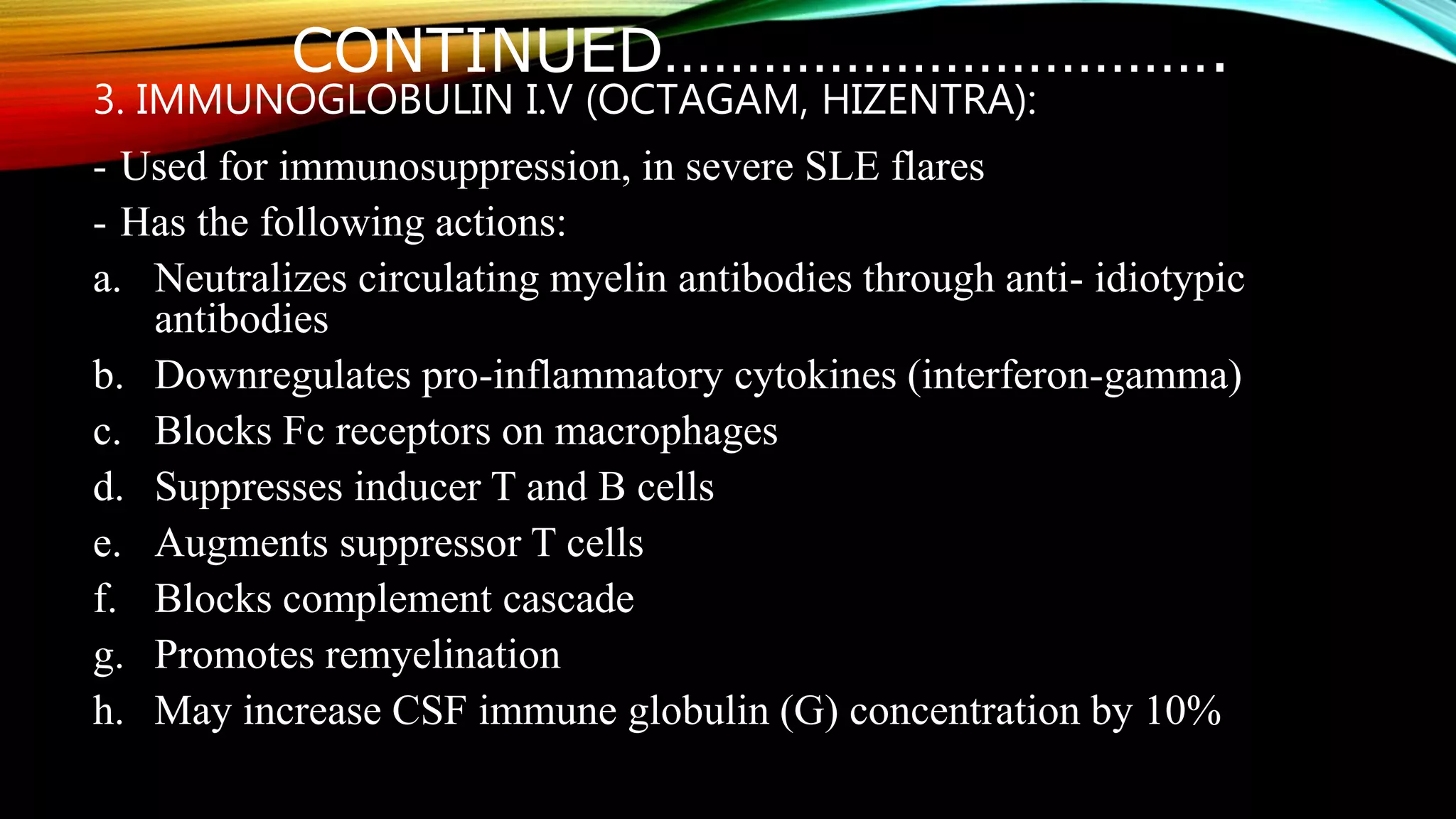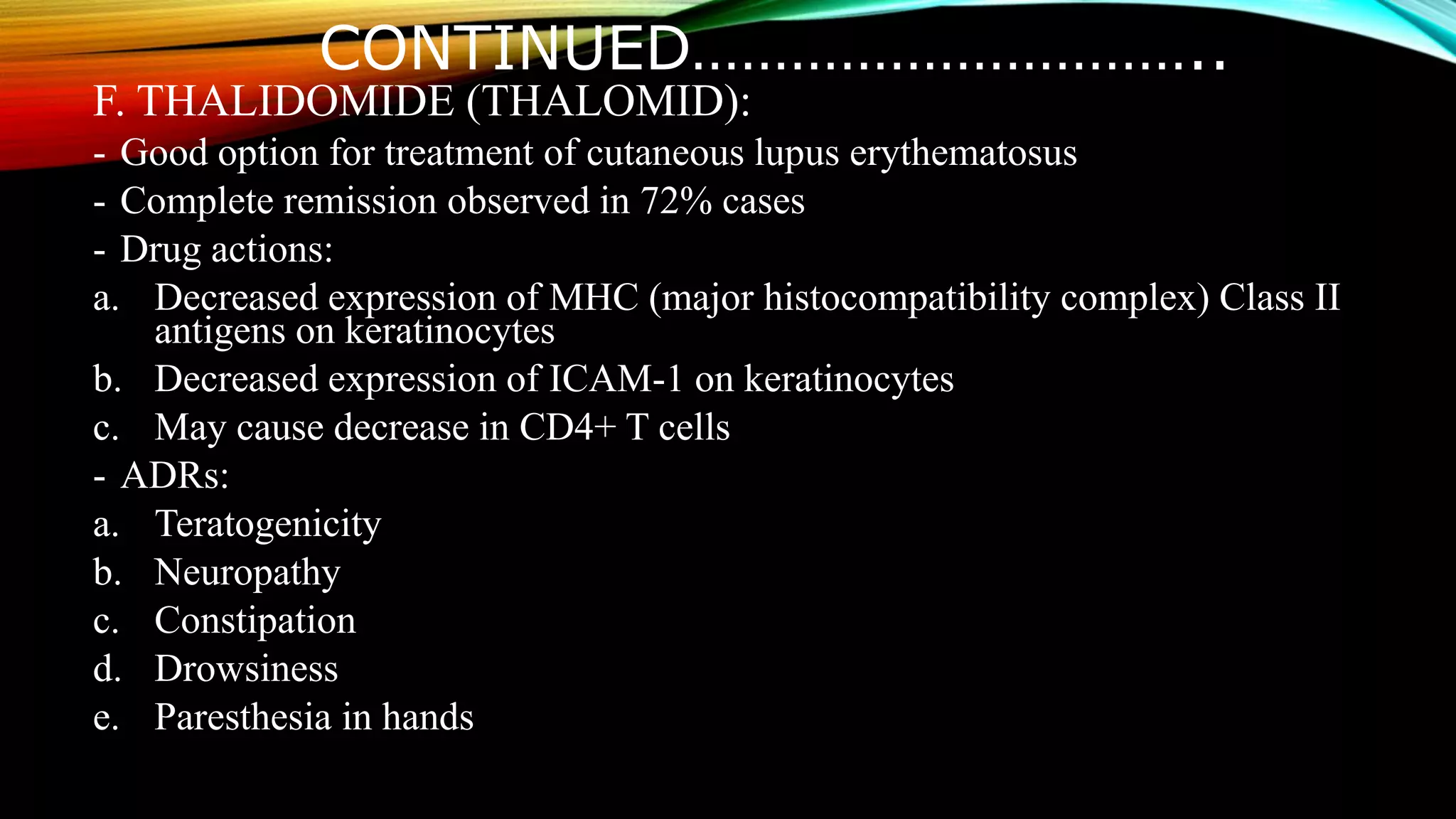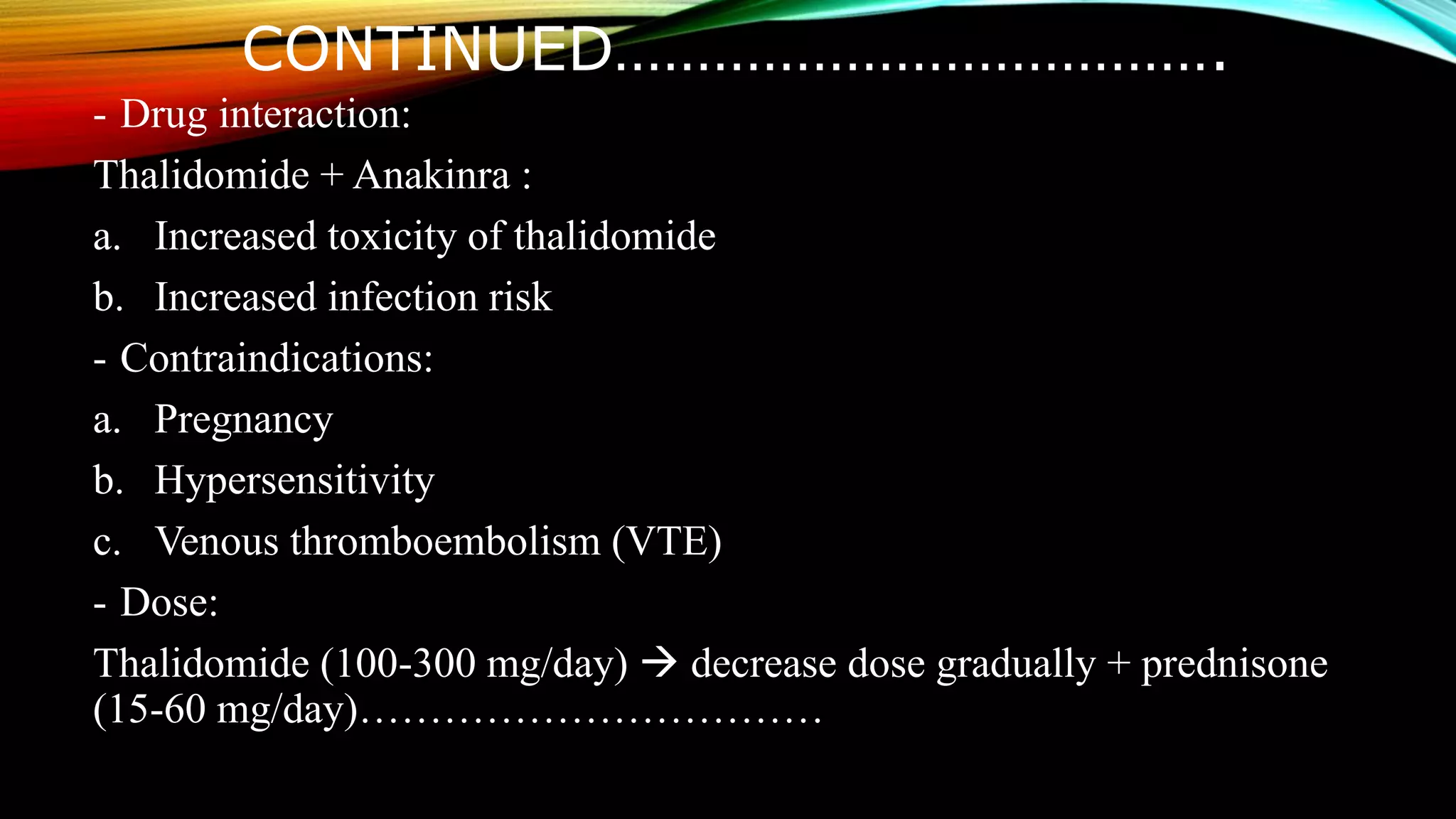Systemic lupus erythematosus (SLE) is an autoimmune disease characterized by the immune system attacking healthy tissues, affecting various body parts, and predominantly impacting women aged 14-64. It has a complex etiology involving genetic, environmental, and infectious factors, with symptoms ranging from fatigue and fever to renal issues and neurological manifestations. Diagnosis is based on clinical and lab criteria set by the American College of Rheumatology, with management strategies including pharmacotherapy and lifestyle modifications to reduce symptoms and prevent complications.
